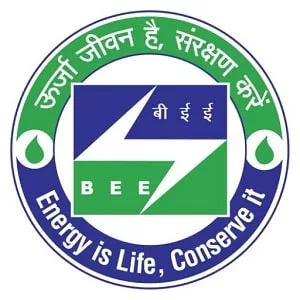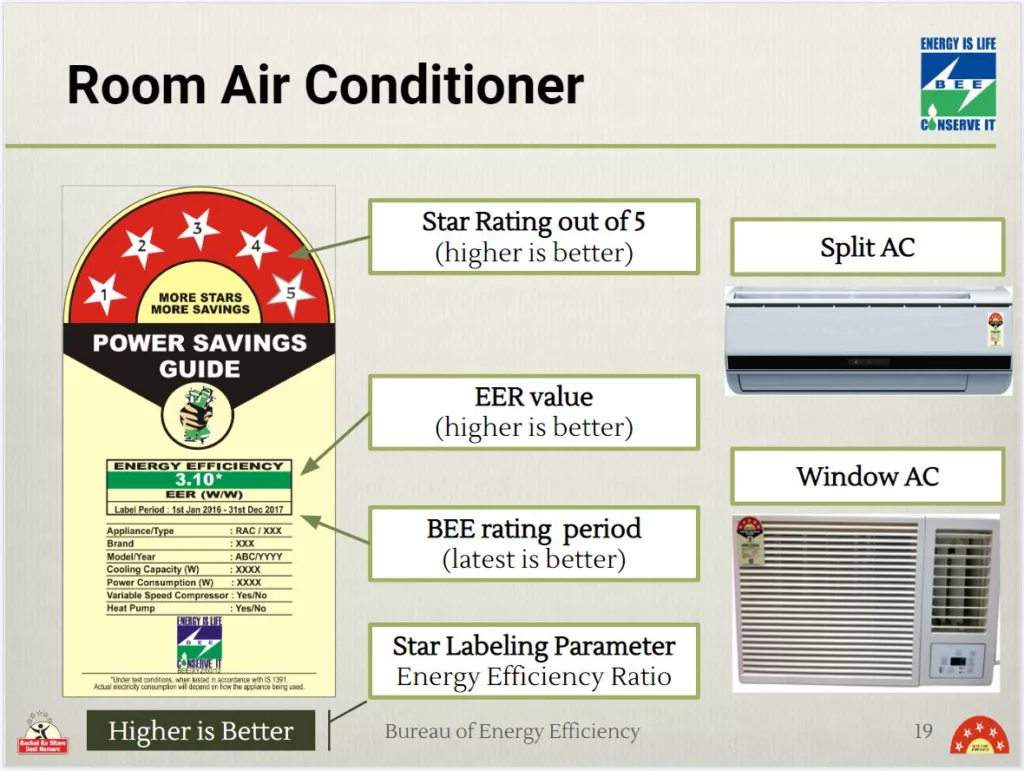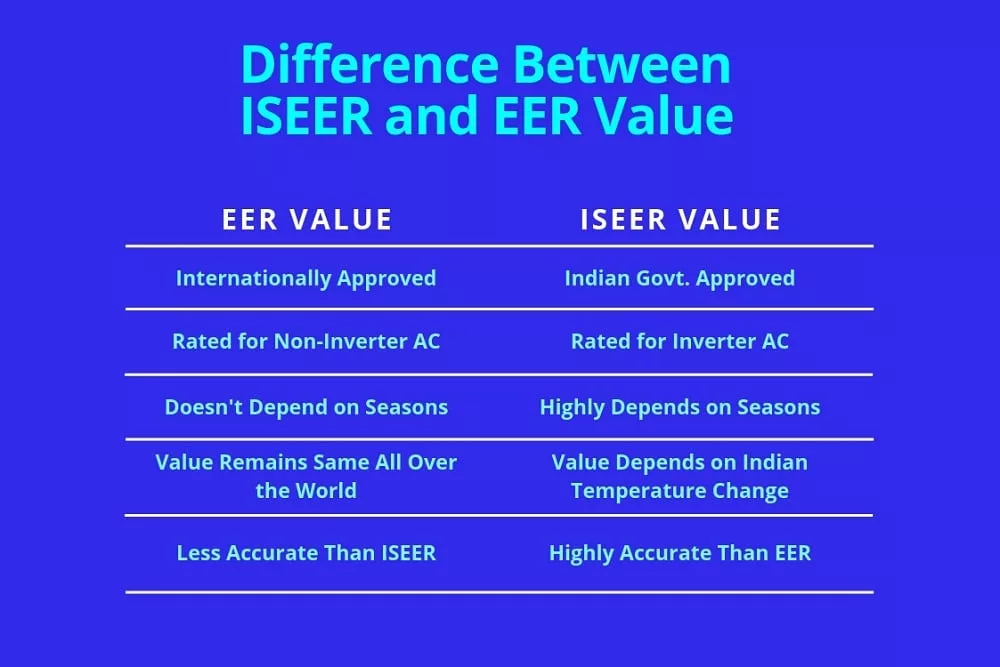Have you ever noticed a BEE star rating sticker on a large home appliance? Well, many consumers don’t even understand how vital this BEE star rating is, especially for heavy home appliances like ACs, Refrigerators, Water heaters, etc. In this post, we will learn what BEE is, what the purpose of it, and how to calculate it.
The principle is very simple
Buy a better star rated AC and save high amount of money every year.
What is the Definition of BEE Star Rating?

The full form of BEE is the Bureau of Energy Efficiency. It is an agency under the Ministry of Power (Government of India) which was created in March 2002. The primary purpose of this agency is the conservation of energy by raising awareness about “the effective use of electricity” in the general public.
In layman’s terms, BEE star rating means how efficiently an appliance can use electric power. It is represented in the simplest form of a star rating given out of 5. The higher the star rating of an appliance, the less energy it will consume, and as a result you will save more on electricity bills.
Important: BEE Energy stars’ rating value changes every year as product efficiency continues to improve. For example, a washing machine with a 3.5 BEE star rating will have a lower number next year.
So it should be easy to understand that a 4-star product will save more power than a 3-star product. So always try to purchase a high BEE star rating product like 4 stars or 5 stars. Keep in mind that a 5-star product will cost more than a 3-star product, but the 5-star product will save huge money on electricity every year. So effectively, a better eco-friendly investment would be a 5-star product rather than a 3-star.

The Government of India has made it mandatory for several large appliance brands to mention their BEE star rating for their product since Jan 2010. The main purpose is to spread awareness among consumers to understand energy consumption better.
What is the Purpose of BEE Star Rating?
The prime objective of this star rating is to reduce energy consumption within the country. The customer must get all the necessary information about the energy efficiency of the particular product they are buying. In this way, the manufacturers are also competing to produce better energy-efficient products.
How is the BEE Star Rating Calculated?
BEE star ratings are calculated in ISEER in general and sometimes in EER. So, before we understand how to calculate a BEE star rating, we must understand the EER and ISEER values and the difference between them.
**To understand all these values and calculations, let’s take the example of the air conditioner as our appliance.
1. EER Value Calculation
EER stands for Energy Efficiency Ratio and is generally given to fixed-speed compressor (non-inverter) air conditioners. So the EER of an AC is calculated as
EER = Amount of heat removed in an hour ÷ Power consumed in the same hour
The heat removed by the AC will depend upon the temperature of the room. Therefore, it is calculated at a particular temperature and humidity. Generally, the outdoor temperature is set to 35°C and the indoor temperature will be set to 27°C with 50% of the humidity value for calculation purposes.
2. ISEER Value Calculation
After the introduction of variable speed air compressor conditioners (inverter AC), the old calculation method was not enough to provide an accurate result for different ACs. As a result, BEE has to introduce a new system of value calculation i.e. ISEER (Indian Seasonal Energy Efficient Ratio). It is much more accurate than an EER method of calculation. Here is how you calculate the ISEER value.
ISEER = Cooling Seasonal Total Load (CSTL) ÷ Cooling Seasonal Energy Consumption (CSEC).
As you can see, the calculation method of ISEER is pretty much the same as EER, but ISEER also considers the seasonal temperature changes and the variable power consumption by an inverter-type AC.
Difference Between ISEER and EER Calculation

So we can say that all the non-inverter (fixed speed) ACs are calculated in EER values whereas the inverter ACs are calculated in ISEER values. Now, these values lead us to the BEE Star ratings. Take a look at the example below.
How to Compare Different BEE Star Ratings?

It is not fair to compare a 5-star 1 tonnage window AC with a 5-star 1 tonnage split AC because of the difference between their EER values. As we already know the EER value means the efficiency of an electric appliance. After all, a 5-star window AC is less efficient than a 5-star split AC which is why the split AC will save more power. Check the above image for reference.
Likewise, we cannot compare a 5-star washing machine with a 5-star refrigerator as both have different EER/ISEER values.
The EER/ISEER values will probably change every year. So in order to compare two different kinds of products, we should check for their EER or ISEER value, not star rating.



